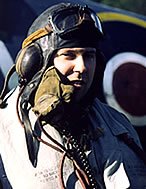Battle Stations

'Technology was a dominant and determining theme of World War II,' writes historian Robin Cross in his introduction to this website. He then looks at 10 examples – aircraft, tanks, ships and weapons – that show how crucial technological innovation was to that conflict. There are also details of where to look for even more informatiThe prototype Spitfire made its first flight on 5 March 1936 and went into production, as the Mark I, in July 1938. The first RAF squadron to be equipped with the Spitfire was No. 19 based at Duxford in Cambridgeshire. The final delivery, of the Mark 24 Spitfire, was made in October 1947.
Possibly the most famous combat aircraft in history, the Spitfire was designed by the dying Reginald Mitchell to Specification F 37/34 using the new Rolls Royce PV-12 engine, later named Merlin. It was the first all-metal stressed-skin fighter produced in Britain. When Britain declared war on Germany in September 1939, RAF Fighter Command fielded 187 Spitfires in front-line units.
Though more difficult to build and repair than the Hawker Hurricane, which had entered service with the RAF in 1937, the Spitfire had a significant edge in performance. Its large elliptical wing – later frequently replaced for low-altitude operations – also gave it the ability to turn very tightly.
This was the Spitfire's one major asset when it met the otherwise comparable German Messerschmitt Me109E in the Battle of Britain in the summer of 1940. However, for a time, the ability of the 109's direct-injection DB601 engine to keep running under negative gravity – as when suddenly going into a dive – proved an embarrassment to the spluttering Merlin with its float-chamber carburettor.
By 1941, the Spitfire VB had been fitted with the more powerful Merlin 45 engine and also much-needed cannon and, in skilful hands, was a match for the Me109. By the end of the war, the Spitfire had accommodated 19 different versions. It had originally been designed solely as an air defence interceptor to engage and destroy enemy bombers over the British Isles. It later served in North Africa, the Mediterranean and the Far East, and its many roles included ground attack and low-level reconnaissance, a testament to its superb design and versatility.
The last Spitfire sortie was flown in Malaya on 1 April 1954. on

0 Comments:
Post a Comment
<< Home